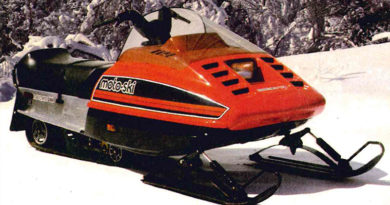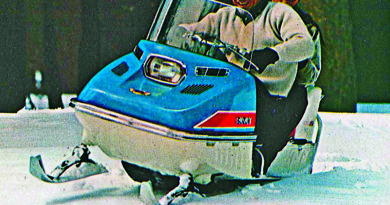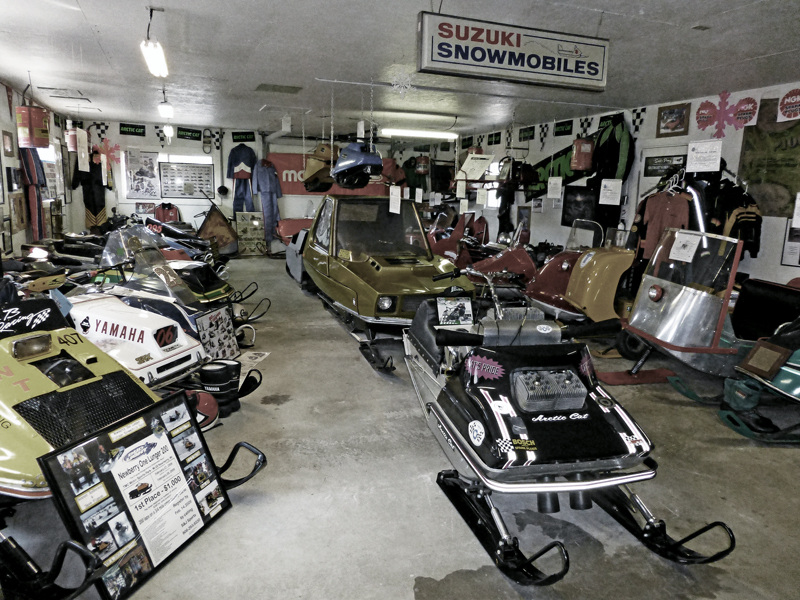Flashback: The 1973 Evinrude Trailblazer
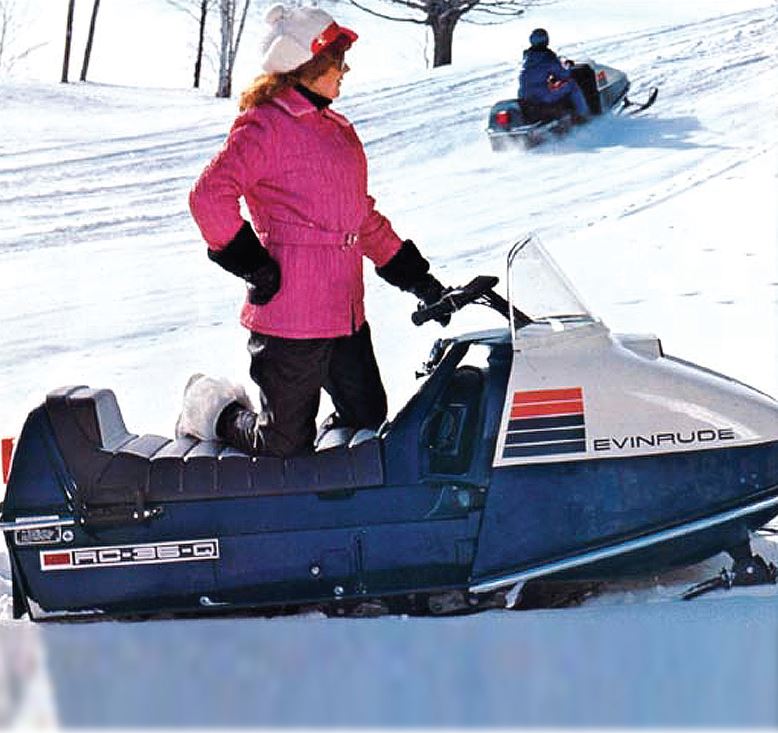
In June 1964, Outboard Marine Corporation (OMC) became the first big name manufacturer to enter the rapidly expanding snowmobile market. But soon OMC was being left in the snow dust by more performance-oriented companies. Something was needed to refocus consumer attention on this industry pioneer.
For the 1973 model year, that something became the industry’s first domestically produced Wankel rotary engine.
The Rotary Revolution
Perfected in the late 1950s by Dr. Felix Wankel of West Germany’s NSU Motorenwerke, the rotary engine design was licensed to other companies for commercial development. A three-sided rotor spins inside a trochoid (two slightly overlapping circles like the Master Card logo) combustion chamber to open the intake port, compress the air-fuel mixture and expel the burned charge. Light and compact with few moving parts, non-critical of fuel, virtually vibration free and quiet for the day, rotaries produced more horsepower and much greater low-end torque than heavier two-strokes of like displacement.
By 1971, several companies including Skiroule and Polaris had built sleds powered by Fichtel & Sachs Wankels. Arctic Cat was selling all the Sachs 303cc rotary-powered sleds that it could produce, with the Wankel Lynx frequently retailing at or above list price. Other manufacturers were clamoring for more rotary engines, and Sachs could not begin to meet the demand.
OMC had acquired a Wankel development license in 1963 for use in outboards, but never followed through. During the winter of 1970-71, the company decided to try the Wankel in sleds and began work on the project D471 rotary. At 528cc, the 35 hp OMC Wankel was the first rotary engine developed specifically for snowmobiling, the most powerful rotary to go into a snow sled at the time and the first production rotary to be built in North America. Yet it was essentially the same size and weight as the very popular but considerably less powerful Sachs 303 Wankel.
The D471’s novel compound porting produced very smooth idling while allowing better high-speed breathing for improved top-end performance. Capacitor Discharge ignition (CDI) with unique 12mm surface gap spark plugs fired the fuel charge. A centrifugal cooling system made of lightweight magnesium was used instead of the conventional fan on the Sachs Wankel.
In February 1972, 150 pilot-build rotary-powered sleds were shipped to OMC dealerships across the continent for extensive field testing by dealers and lucky customers. Some of these test sleds logged as many as 1,600 miles during the balance of that unusually lengthy winter.
Deemed ready for production, the OMC Wankel was initially offered for sale in the 1973 Evinrude RC-35-Q Trailblazer and its identical twin in alternative trim, the Johnson Phantom.
Big Sled, Big Features, Big Bucks
OMC believed that customers would pay a premium for the advantages of this new engine, so it was placed in its top-of-the-line models. Loaded with safety and convenience features, the Trailblazer was just about the heaviest single-track machine on the market, and at $1,850, it was one of the most expensive. An Arctic Cat Panther with the improved Sachs 295 Wankel weighed 100 pounds less and cost only $1,325, albeit without many amenities of the RC-35.
Sled magazines praised the D471 rotary engine, but were less enthusiastic about other aspects of the OMC rotary twins. “The engine has tremendous potential, but it deserves to be fitted to a lighter chassis,” said Invitation to Snowmobiling. “Turning the Phantom involves a lot of body English to overcome the considerable understeer that dominates this new family sled,” reported the Popular Science Snowmobile Handbook.
Both publications commented that the big OMC would be really tough to get unstuck if you did get it bogged down to the point that you couldn’t back it out with its reverse gear.
But performance sleds were taking over and 2-ups were entering a decline, so there simply wasn’t much of a market for a big, heavy and expensive family machine with sub-standard handling and obsolete bogie suspension, especially when sold by dealers who generally looked at snowmobiles as something to do only when boats were in hibernation.
Moreover, the rotary engine craze had peaked and gone sour. Problems with side seals were beginning to discredit the Wankel and consign many rotary sleds to the junk yard. And unlike a couple of years earlier when Wankels could command a premium price, very few snowmobilers were now willing to pay more to get one, if they were willing to accept the engine at all. Add the 1973 energy crisis and chronic industry overproduction, and the big OMC rotary just never had a real chance to make it.
The D471 was reworked to produce 45 hp without an increase in displacement for 1974, and the sled was improved cosmetically, but it made no difference. All Evinrude and Johnson snow machines were selling poorly, and 1976 was OMC’s last year in the snowmobile business.
The innovative and powerful OMC D471 Wankel engine just couldn’t overcome everything stacked against it. Terrible timing, an overweight and outdated chassis, sub-standard marketing, high price and an organization not dedicated to snowmobiling doomed the first and only snowmobile with an American-made Wankel engine.
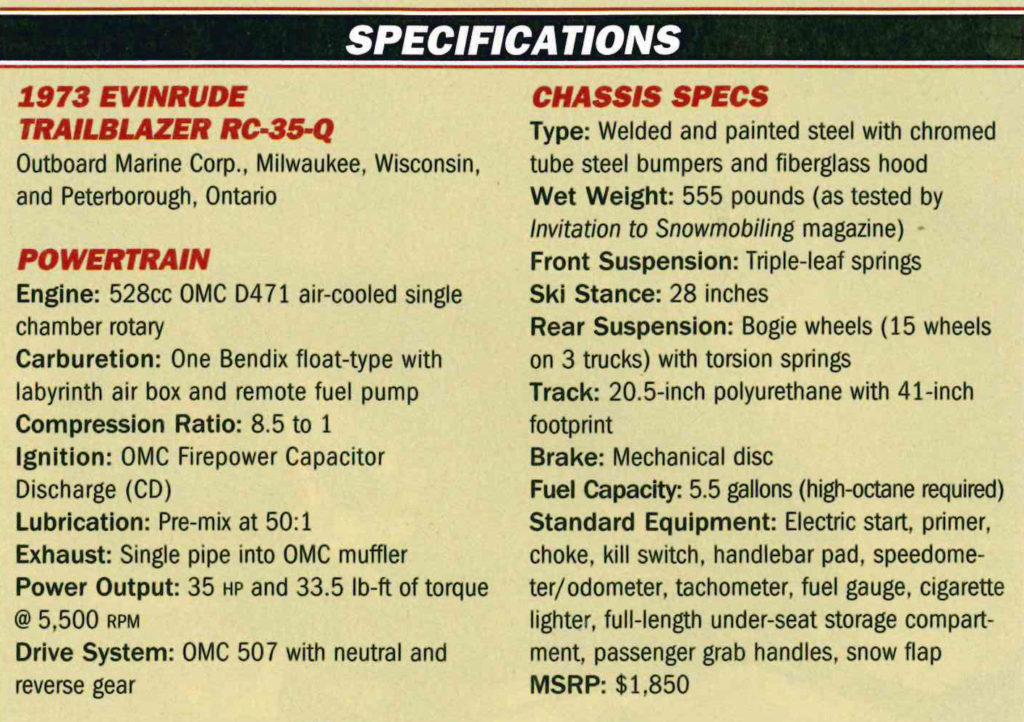
Editor’s Note: Every Snow Goer issue includes in-depth sled reports and comparisons, aftermarket gear and accessories reviews, riding destination articles, do-it-yourself repair information, snowmobile technology and more. Subscribe to Snow Goer now to receive print and/or digital issues.

